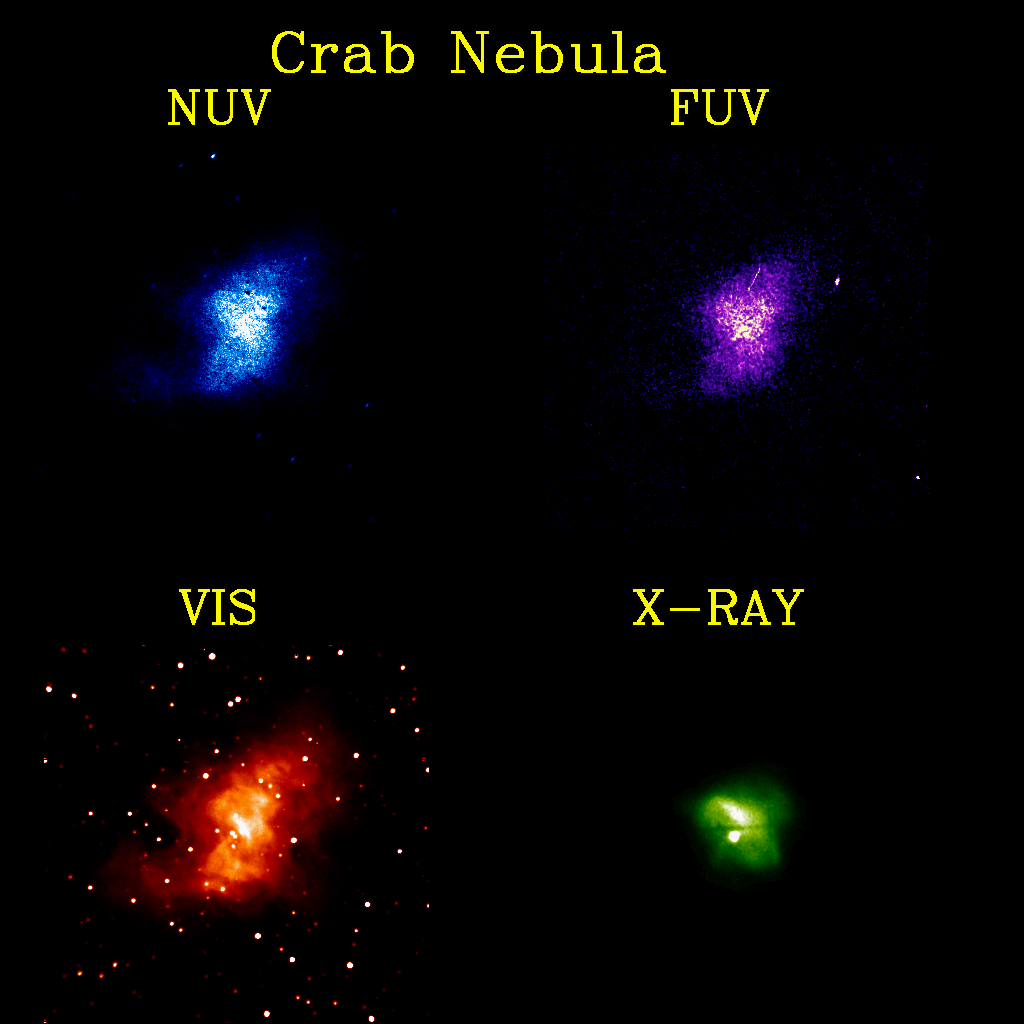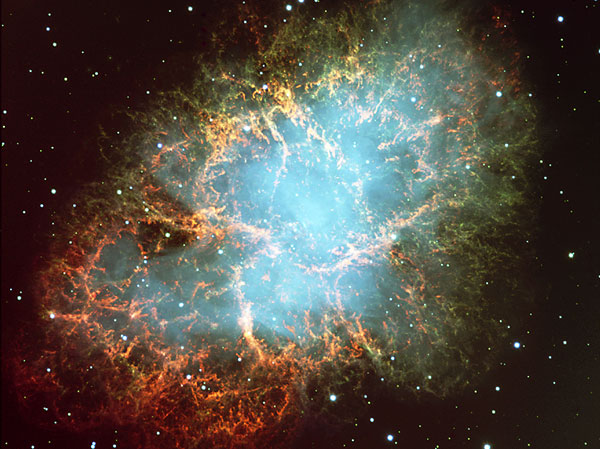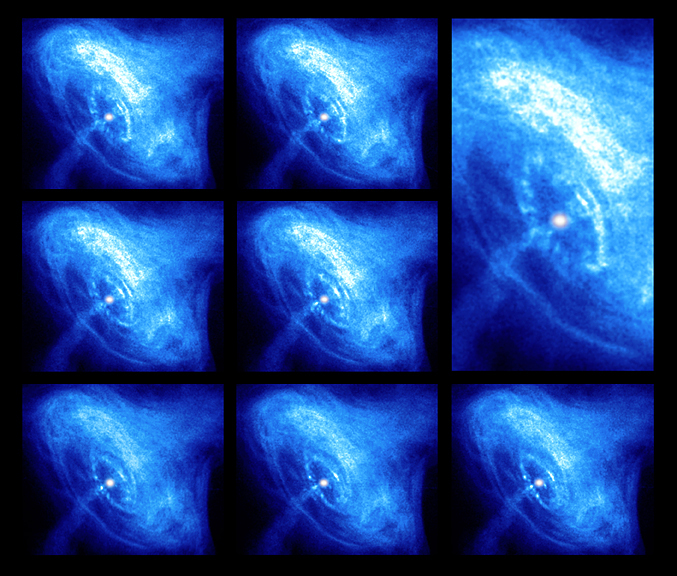Astronomy Picture of the Day
Discover the cosmos! Each day a different image or photograph of our fascinating universe is featured, along with a brief explanation written by a professional astronomer.
Posted on 09/04/2003 5:27:27 AM PDT by petuniasevan
Discover the cosmos! Each day a different image or photograph of our fascinating universe is featured, along with a brief explanation written by a professional astronomer.
Explanation: The Crab Pulsar, a city-sized, magnetized neutron star spinning 30 times a second, lies at the center of this composite image of the inner region of the well-known Crab Nebula. The spectacular picture combines optical data (red) from the Hubble Space Telescope and x-ray images (blue) from the Chandra Observatory, also used in the popular Crab Pulsar movies. Like a cosmic dynamo the pulsar powers the x-ray and optical emission from the nebula, accelerating charged particles and producing the eerie, glowing x-ray jets. Ring-like structures are x-ray emitting regions where the high energy particles slam into the nebular material. The innermost ring is about a light-year across. With more mass than the Sun and the density of an atomic nucleus, the spinning pulsar is the collapsed core of a massive star that exploded, while the nebula is the expanding remnant of the star's outer layers. The supernova explosion was witnessed in the year 1054.
M1, the Crab Nebula
| Right Ascension | 05 : 34.5 (h:m) |
|---|---|
| Declination | +22 : 01 (deg:m) |
| Distance | 6.3 (kly) |
| Visual Brightness | 8.4 (mag) |
| Apparent Dimension | 6x4 (arc min) |
The Crab Nebula is the most famous and conspicuous known supernova remnant, an cloud of gas created in the explosion of a star as supernova.
The supernova was noted on July 4, 1054 A.D. by Chinese astronomers, and was about four times brighter than Venus, or about mag -6. According to the records, it was visible in daylight for 23 days, and 653 days to the naked eye in the night sky. It was probably also recorded by Anasazi Indian artists (in present-day Arizona and New Mexico), as findings in Navaho Canyon and White Mesa (both AZ) as well as in the Chaco Canyon National Park (NM) indicate; there's a review of the research on the Chaco Canyon Anazasi art online. In addition, Ralph R. Robbins of the University of Texas has found Mimbres Indian art from New Mexico, possibly depicting the supernova.
The Supernova 1054 was also assigned the variable star designation CM Tauri. It is one of few historically observed supernovae in our Milky Way Galaxy.
The nebulous remnant was discovered by John Bevis in 1731, who added it to his sky atlas, Uranographia Britannica. Charles Messier independently found it on August 28, 1758, when he was looking for comet Halley on its first predicted return, and first thought it was a comet. Of course, he soon recognized that it had no apparent proper motion, and cataloged it on September 12, 1758. It was the discovery of this object which caused Charles Messier to begin with the compilation of his catalog. It was also the discovery of this object, which closely resembled a comet (1758 De la Nux, C/1758 K1) in his small refracting telescope, which brought him to the idea to search for comets with telescopes (see his note). Messier acknowledged the prior, original discovery by Bevis when he learned of it in a letter of June 10, 1771.
This nebula was christened the "Crab Nebula" on the ground of a drawing made by Lord Rosse about 1844.

Below is a VLT image of the Crab.

The Crab Nebula is located in the constellation Taurus.


Anyway, that's my analysis, FWIW.
Hubble image in visible light:

And multiple x-ray images from Chandra:


Disclaimer: Opinions posted on Free Republic are those of the individual posters and do not necessarily represent the opinion of Free Republic or its management. All materials posted herein are protected by copyright law and the exemption for fair use of copyrighted works.